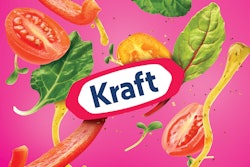Paper & Packaging-How life unfolds is a promotional campaign celebrating the connection between the two sides of the hyphen. The campaign is sponsored by the Paper & Packaging Board (P&PB), an entity devoted to the growth of the referenced products. The campaign includes various television commercials, each a human-interest story, showcasing how paper and packaging contribute to the richness of life.
The need for such reminders is rooted in various trends. For example, there are the many incentives to “go paperless.” Then there’s the digitization of newspaper, magazines, books, etc. Emailing has long since reduced reliance on hand-written letters. Similarly, there’s the electronic sending of greeting cards, invitations, announcements, and the like. P&PB wants to characterize those trends as impersonal and wants to encourage the more hands-on alternatives.
Those trends, affecting paper in a generic sense, nonetheless might seem distinct from packaging, but aren’t, given that packaging is a large sector of the paper industry. A reduction in demand for paper results in idle machinery and excess capacity for certain manufacturers, most likely those of commodity grades. Some of those manufacturers, seeking higher growth and margins, might look to packaging, particularly specialty packaging. Oh, but were it that straightforward. There are factors, investment in equipment being one, depending on in-line operations.
Paper packaging is flexible packaging, the latter recognized as a growth category; beyond that, the various applications of paper packaging reduce generalizations to limited usefulness. But talking specifics, the applications that come most readily to mind are those involving CPG companies (consumer packaged goods), major examples being bags and pouches. The application with the widest breadth, however, is labels. And whereas paper labels──all types together──involve large tonnage, self-adhesive labels add to it because they include release-liners.
Not to be overlooked is the restaurant/food service sectors, in all their diversity (fast-food, casual sit-down, specialty shops, among others). Coated papers and waxed papers bring valued properties, as do other types, such as OGR (oil and grease resistant). Another entry is MG (machine-glazed) kraft papers, whether natural brown or bleached white, a staple for wrapping a variety of food items.
Deserving of its own mention is medical paper packaging because of its exacting requirements. Paper’s porosity makes it compatible with the sterilizing methods of steam and ethylene-oxide, both of which impose the additional requirement of wet-strength. Because medical paper packaging contains fibers that can shed particulates, an inherent requirement is for a clean peel.
Flexibles aren’t the whole story when it comes to paper packaging; for, increased thicknesses (starting around 10-12 points) transition into paperboard. Beverage carriers are a high-volume member of the category. The most associated member, however, is the folding carton, which offers endless design possibilities, with materials ranging from solid bleached sulfate (SBS), to clay-coated, to chipboard. Admittedly, there has been reduced use of folding cartons as secondary packaging; an example is OTC pharmaceuticals that have eliminated them for the purpose of source reduction. Conversely, folding cartons are seeing applications in aseptic packaging. And even a mature technology such as microwave interactive materials (susceptors) continues to spur patents in paperboard in terms of trays and sleeves.
Corrugated is classified as a board, but in truth it’s a hybrid: a board consisting of paper in the forms of facings and flutes. Classifications aside, corrugated board, particularly boxes, are the workhorses of most supply chains. Whereas the growth of corrugated board will keep pace with logistical demands, what remains ever-shifting is the use of recycled content. That, along with the above allusion to source-reduction, segues the discussion to sustainability.
Paper packaging──from a renewable resource and recyclable──would seem to be tailor-made for sustainability; however, by now, that era has made it clear that no packaging material is immune from attacks. Illustrating that point, the fact that papermaking consumes copious amounts of water is cited by critics concerned with the conservation of that resource.
Then, there’s the sustainability vs. convenience tug-o-war, which doesn’t always favor paper packaging. Regarding shopping bags, for example, “Paper or plastic?” has become a question asked less frequently than, “VHS or Betamax?” Features such as handles, double-bagging, moisture-resistance, and reusability have made plastic bags acceptable to the majority of shoppers. Grocers, including sustainability-stalwart Walmart, prefer plastic bags for the productivity of the carousel system. As for conventional packaging, paper and plastic frequently are combined in a single structure, the properties of one supplementing the properties of the other.
Up to this point, the discussion has been on functionality, but paper packaging also brings serious credentials in terms of aesthetics. Paper itself is a canvas, and whether on a store shelf or on a pallet, no other packaging material combines for a better “billboard” effect. So whether with flexography or rotogravure, print quality needs to be worth the paper that it’s printed on.
The P&PB campaign is an example of pull marketing: a promotional strategy, targeted at the consumer, aiming to increase awareness of and demand for a product. Affiliated companies will benefit should P&PB’s efforts prove successful; however, it doesn’t exempt those companies from certain preparatory responsibilities.
The paper packaging industry starts with the mills, and the ones looking to the packaging sector to improve their fortunes might do so through investment, divestment, diversification, acquisition, and merger. Within that welter, shakeouts and realignments are foregone conclusions, and mills will need to forge strategic partnerships (consistent with their individual supply chains) with suppliers, converters, and distributers.
CPGs companies should stay aware of the influx character of the paper packaging sector, to be able to map effective procurement strategies. Even when a company has a history with a given paper packaging supplier, it’s advisable to reevaluate the relationship, taking into account that supplier’s technologies and innovations, of course, but also services provided before and after the issuance of a purchase order. So, a strategy for the times is one that not only looks good on paper but also works well on paper.

























